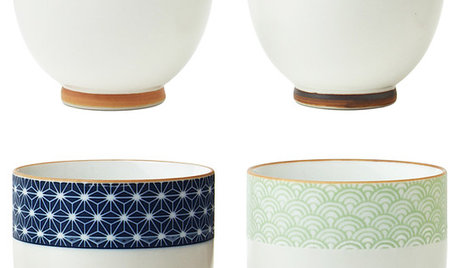Getting Discouraged with Teas....
Greetings. In the spring of 2006, I put in about a dozen of the old Teas (Lady Hillingdon, Mrs. Dudley Cross, Maman Cochet, Amazone, Rosette Delizy, etc). They are in what I consider an absolutely prime location...good soil, great sun, plenty of water, etc. Last spring they suffered from the Easter Freeze...many canes really just froze or got canker. I'm seeing some of this again. I'm hoping that, in time, they'll profuce more of that woody cane material which seems to withstand the changes in temperature, but at this rate...I don't know? Is anyone else having significant late winter dieback on mainly the Teas? Do I just need to be patient?
Robert
Comments (77)
paddlehikeva
16 years agolast modified: 9 years agoThis is the strength of this forum - information, encouragement, and camaraderie.
Thanks all!
Kathy
buford
16 years agolast modified: 9 years agoA beautiful post patricia. You've inspired me to get and plant all the roses I want NOW. Because you never know.
Related Professionals
Rossville Landscape Architects & Landscape Designers · San Juan Landscape Architects & Landscape Designers · Caldwell Landscape Contractors · Goodlettsville Landscape Contractors · Louisville Landscape Contractors · Mount Sinai Landscape Contractors · Roswell Landscape Contractors · Saint Paul Landscape Contractors · Midwest City Swimming Pool Builders · Augusta Siding & Exteriors · Baltimore Siding & Exteriors · Carmel Siding & Exteriors · Fairfax Siding & Exteriors · Kennewick Siding & Exteriors · Springfield Siding & Exteriorsoath5
16 years agolast modified: 9 years agoI know how you feel somewhat Robert. I'm currently really discouraged with Crepuscule. It's relluctance to grow has kept me eagle eying for the past two winters for what damage to expect.
I'm hoping this blatant tea "shyness" in growing has shown itself in this particular noisette-tea hybrid and that it's tenderness won't be so much of a problem if that is indeed the case. I'm guessing it's the early years that are the most important.
Rose genetics are fascinating.
Max
ceterum
16 years agolast modified: 9 years agoPatricia, you are a brave, bright and very strong woman. You will see all those new roses as grown ups including SGMC. You must! I want that for you.
catsrose
16 years agolast modified: 9 years agoThis is an inspiring thread, from the encouragement to hang in with teas to Patricia's story. I just finished spring pruning and fertilizing and realized that everyone who is still small and straggly after two-three years is either a tea or a bourbon, Mrs Joseph Schwartz being the one exception. So I will be patient. My Chinas have taken off like bats out of hell, including flying off in every twiggy direction, better than anything else.
I had a great perk today. My neighbors brought their extended family over to see my roses, which are just now leafing out. But they wanted to show how old they are (my labels include the intro date). They walked around saying, "Wow, 1848. And there's 1909, 1834, 1759...."buford
16 years agolast modified: 9 years agocats, my labels include the dates too. I love having plants that are clones of plants from the 1800s and before.
My Marie d'Orleans (year 3) has taken off, I think. Mlle Kruger and Rosette Delizy are set to take off this year, weather willing.
ronda_in_carolina
16 years agolast modified: 9 years agoPatricia--
That was a beautiful post. You are very sweet to share it.
Ronda
rjlinva
Original Author16 years agolast modified: 9 years agoI certainly do appreciate all this encouragement. I didn't mean to come across SO discouraged. I just hear so many positive things about Teas, and mine seemed to be getting knocked down again at this time this year as they were last year. But, this encouragement has given me newfound strength to be patient. I'll do the same with Nastarana, Champney's Pink Cluster, and Blush Noisette which seem to be having trouble "taking off."
On a very positive note, my roses are leafing out (I hope not too early), and, I think I'm going to have a gorgeous garden.
When I have a closer idea when the "peak" will be, I'll be offering an open invitation to come for wine, roses, and friendship.
Robert
paddlehikeva
16 years agolast modified: 9 years agoRobert, I am glad you asked the question, I too am a little discouraged with my teas. Safrano shows no sign of life as of yet. The potted teas I have in my unheated greenhouse stayed green all winter, a need to figure out where to plant them in the yard so they will be protected.
I KNOW your garden will be gorgeous! It was beautiful in the pouring rain weeks past peak when I saw it last year. I will accept your open invitation for wine, roses, and FRIENDSHIP.
Kathy
lori_elf z6b MD
16 years agolast modified: 9 years agoWell, if it's any consolation to you I've killed a whole bunch of teas and pretty much got discouraged and grow other kinds of roses instead. You're further south so perhaps might have better luck. I have one tea rose left, Georgetown tea, sort of the token tea. It's a puny little 12" scrappy ugly bush though and I'm not sure how many more years I should give it, though it is healthier than the other varieties I have tried. I hate spring canker and die-back problems. I refuse to spray the darn things and they blackspot and defoliate badly here, then weaken and die.
Anyway, my main advice to you is probably to slow down. You've bought so many different roses in a short amount of time you should spend a few seasons getting to know what you like and how things behave in your garden over time. Also, as your bushes mature you will find the maintenance of them gets to be more and more work and see how many roses you can realistically keep up with. Climbers, unless you plan to have a wild tangle of unpruned growth, can especially take a lot of work to keep looking neat, attractive, and rejuvenated. That's probably not what you want to hear and not what most people will encourage you to do. But I do recommend you take your time to evaluate things and learn about your unique conditions... and then you can replace your underperformers with roses which you will have a higher probability of enjoying.
ingrid_vc so. CA zone 9
16 years agolast modified: 9 years agoLori, you've made some very wise and helpful comments. They made me realize, with a certain sense of shock, that I have ten climbers against the house walls which will need maintenance and care for the rest of their days. In retrospect I may definitely have overextended myself and underestimated the size they will ultimately reach. Will they even fit into the spaces I've allotted them? It's so easy to get carried away with pictures and glowing descriptions, not to mention my own impatience in making this a place of beauty as quickly as possible. I suppose my only hope now is that some of them will sulk for a few years and give me a little rest before they all explode into action.
Ingrid
len511
16 years agolast modified: 9 years agoRobert, have you ever read the rose bible by rayford clayton reddell? "...I think that teas have hung around mainly from our devotion to their heritage...HT's are such an improvement-their bushes are not only more vigorous and hardier,they're also far more disease resistant."
So it seems that that is just the way they are. Love 'em or leave 'em?? I was just recently considering buying a couple to try, but i think i will just pass. Thanks for the thread, it has convinced me now.anntn6b
16 years agolast modified: 9 years agoIn total disagreement with HTs being an improvement.
Their bushes are definitely NOT more vigorous; when first introduced, at least one seller recommended buying six and planting them on 18 inch centers so the rose beds would look full.
And as to hardier, my Teas survived the Easter freeze; HTs in my part of the world died like wimps.
HTs weren't bred to be out door plants but to be grown in greenhouses for cut flower sales. Then there were an evolution to outdoor growth, but they had to be grafted. It's only a few of then thousands of HTs that survive because so many didn't make it.And I will mention reading the papers left behind by Glenn Viehmeyer in North Platte Nebraska who was involved in a cold hardy rose breeding program (that succumbed to RRD) but he was shocked when he realized that teas were hardier than HTs. He discovered that for himself. Nobody in a really warm zone could tell him that because it's not something they would or could know.
I'll let someone else address the disease resistancd of modern HTs, someone with a sense of humor.
len511
16 years agolast modified: 9 years agowell ann, thanks a lot, now i'm gonna go tea shopping so i can just prove you wrong!lol. the only ht's i have currently are 3 dainty bess and they are doing a heck of a lot better than i expected from a ht.
jerijen
16 years agolast modified: 9 years agoTo misquote Shakespeare, "The fault, dear Horatio," lies not in the Teas but in yourself."
Clearly, Teas are not the right roses for YOU. That's not the fault of the Tea Roses.
IF you think that HTs are an "improvement" over Tea Roses, you should grow HTs.
Tea Roses will flourish, and delight the senses, in conditions that would send the poor HTs running for their smelling salts and their pesticide sprays.
But Tea Roses aren't the right roses for every garden and every climate, any more than HTs are.
If you want to grow roses, figure out what sort of roses grow best where you are gardening, and which roses you personally find most pleasing, and plant them.I've grown HTs. (And some of most other sorts of roses, including a full panoply of Austins.)
I don't have the right conditions for them, so I won't be planting anymore.
But that doesn't mean they are bad. It just means they don't suit me, or my conditions.Jeri
lori_elf z6b MD
16 years agolast modified: 9 years agoIngrid,
I think we did a similar thing... I have an 8' high privacy fence which I planted with over a dozen climbing roses and probably the same number of clematis varieties and while it looks great in bloom I discovered years later after they matured what effort it takes to maintain. And that is just one little area of my garden! It's so easy to get carried away and want to grow every rose you see or hear about!
Loriingrid_vc so. CA zone 9
16 years agolast modified: 9 years agoThank you for your comment Lori. I hope as my climbers mature and I can assess their qualities I'll have the courage to remove the ones that are not superlative. It's not as though I'm subtracting any numbers from my age every year and with old roses you have to think of the long haul. Much better to keep these things in mind now rather than having to backhoe a monster out of the ground ten years later.
Ingrid
alicia7b
16 years agolast modified: 9 years agoI made the mistake of putting my teas in super-rich soil when I first got them. They grew like crazy over the summer and then bam got frozen and eaten up with canker over the winter. Since then that soil has mellowed and I am careful never to feed my teas in the fall. If the spring and summer growth is allowed to harden off in the fall then the plants can handle cold much better. What they really love is heat! I think if you can get the balancing act right with teas until they grow up and get some size, they will eventually reward you handsomely with lovely flowers and beautiful foliage with little care.
buford
16 years agolast modified: 9 years agoI originally bought 3 teas because of reading about them here. I loved them so much (so far) that I ordered 12 more this winter.
Jeri is right, where you are is a factor. Teas do well in my area, so why not. Plus they are lovely and very disease resistant. And they seem to fit the character of the type of yard I want to have eventually.
I love my HTs and Austins and OGRs. I like all roses. But I think teas are special.
jerome
16 years agolast modified: 9 years ago"I love my HTs and Austins and OGRs. I like all roses. But I think teas are special." - you know Buford, I agree with you so much there. In the climate here the teas are really lovely, and they make me feel like I am actually doing something positive, because they grow. Many of the tea varieties I grow here don't have a "bad month" when they look bad, like the other varieties, and I am so grateful for that.
Jerome
gnabonnand
16 years agolast modified: 9 years agoPatricia, I really appreciate your wisdom. We are lucky to have you.
Randy
It's my life ... and I'm not gonna live forever.
I just wanna live it my way.Jon Bon Jovi
ogroser
16 years agolast modified: 9 years agoRobert - To be redundant, I am in zone 6b (it only got to 9 degrees a couple of nights here this winter) and some of my teas are 8' tall and growing in part shade. I just checked and they as well as a newer bed of 4 yr olds - all are PUSHING THEIR TERMINAL BUDS. I lost none to winter this year or last. As mentioned earlier, they just have to get a little established, and then they will take off. I consider them my most disease resistant class and usually don't bother to spray them. Once in Raleigh 25 years ago, I visited Charles Walker's garden and his teas were 7' tall and had no black spot without spraying and that was in early October. The plants were totally foliated in that black spot heaven part of the world. It was then that I decided to grow some teas when I got to my new place. And I did and am loving them. Best, Nick
sherryocala
16 years agolast modified: 9 years agoThe wonderful thing about roses is that we all in all of our diverse locations can grow them and love them but not all of them. Only some of them and not the same ones. Different ones that are all beautiful in there different ways. Colors, fragrances, shapes, structures. New York, Minnesota, Hawaii, Nova Scotia, Arizona, Italy, Netherlands, Florida, Alaska, California (northern, central, southern, coastal), Florida, Ireland. All of us can grow roses, and isn't it marvelous? The ones we can grow become our favorites - because we can grow them. The luscious plants will grow, sometimes with minimal care, in our little plots of ground. These same flowers that gardeners have fawned over for centuries flower in OUR gardens. There can be no debate about which class is best, because we would each win - in our own garden. God has blessed us with a perfect gift - a flower that can be everything to everyone. And in turn don't we love more the ones who love what we love? Be it our scraggly dog or our shy child or our nodding rose. We just love them. Yes, there are facts and figures that make the case for the supremacy of this rose or that rose, but the proof of love is seeing it grow in my garden. That's the one I love, and that's the best rose there is.
Sherry
oath5
16 years agolast modified: 9 years agoNick that's excellent to hear! Robert, if Nick says they do okay here than yours will most definitely thrive! Just give yourself a little bit of time.
Max
rjlinva
Original Author16 years agolast modified: 9 years agoEveryone,
I am reading every post in this thread, and most of it really makes good sense. I do believe that I really tried to rush my Teas this last summer. I fed and watered them well...constantly. They were never without. I did stop the feeding by the beginning of August which may have been too long to feed. I'm going to let them harden up a lot more this summer. I also have a few more Teas coming this spring which I think I'll plant in some "tougher" areas where the ground bakes and watering/feeding is much more eradic. I'll get them established, and let them go.
Lori, I hear your advice about slowing down. I think I'm at a good number of roses now that I can really get an inkling of what each class has to offer, so I'm going to be much more selective. I say this, but, probably I'll find a new group of roses that I've got to try. I'm not feeling the care of the roses is any work yet, even though I do spend countless hours with my roses. As I am kneeling planting a new border of liriope, my two cats are playing with me, my alpaca is watching, and life is good. It's amazing how much more time one has when he doesn't watch TV...I pretty much gave up television about 12 years ago...another topic for another thread...
Growing antique roses has truly given me the direction I hadn't realized I needed in my passion for gardening. Before antique Roses (BAR), I was collecting plants...all kinds and just throwing them into my yard. Now, I have a vision. My yard is my canvas, and my plants are my paints, and I'm enjoying immensely bringing my vision to reality.
I do hope to share my gardens with any of you who care to visit.
Robert
buford
16 years agolast modified: 9 years agoRobert, I feel much the same way. I never gardened before in my life (except as a kid with my mom), so when we moved down here and I had my first yard, I had no clue what I was doing. For some reason I wanted to try roses. My mother tried to dissuade me, saying they were too difficult, but who listens to Mom?
This is going to be my 7th season in the yard, and I feel it's just starting to get together. I had so much space, no knowledge, no plan. Like you, I just picked individual plants that I liked and stuck them in the ground. Thanks to this site, I now feel I have a half of a clue. And I have the confidence to move plants, change things, try new things and go forward.
Last year I took one of my front yard beds and planted 8 roses in it. 4 were teas, 4 were Austins. It still looks pretty bare, but this year I put some day lilies on the borders and was able to get some foxglove to come up from seed. So I'm hoping it will not look so 'new'. Hopefully everything will pop this year, weather willing.
ogroser
16 years agolast modified: 9 years agoRobert - I forgot to mention that I only feed my teas (and many others) once in the Spring with my home made organic fertilizer that probably only lasts to mid summer. The teas seem to thrive on it and continue to bloom until fall. However, by Fall they seem to be slowing down in growth and bloom without a late summer blast of fertilizer. I also did not give them a lot of water (I was busy watering and tending the dahlias). Perhaps the slow acclimation to Fall and their gradual adjustment to dormancy helped them along with their age. Just some comments and thoughts. Best, Nick
anntn6b
16 years agolast modified: 9 years agoWhat Nick describes is also how I treat most of my OGRs, especially the Teas.
Having come to OGRs from moderns, and the mantra of MUST FEED WEEKLY, I started to realize that in midsummer, I coulnd't water the roses enough to justify that level of feeding. And the one year I did the superbloom and water every three day routine, I lost roses to cold (not to freeze, but to temps inthe 30's.)
And my summers are dry, so I stopped feeding in summer. Then I really started to see that fall is dry as well and if I had fertilzer on the ground, it would be activated in Oct and Nov (when the rains came) and that new growth would be killed by winter.
So spring feeding here.After all, there aren't a lot of how to irrigate roses papers written in the 1800's.
mad_gallica (z5 Eastern NY)
16 years agolast modified: 9 years agoAnn, have you read Buist? He gives a lot of cultural advice about growing teas in Philadelphia. IIRC, he practically was planting them on drywells. Our (east coast) fall rains can start as early as August. Since a lot of this is standard HT growing advice here, an experiment I'd like to make is what happens when you turn the water off in fall. However, I'll need a bit of external cooperation with that one that rarely happens.
anntn6b
16 years agolast modified: 9 years agoMadgallica,
I've read Buist, but for different roses. (I'm still pondering why he lost faith with HPs in one edition. Only to not continue the loss of faith in the next.)
More recently I'd been watching more for the "don't mulch and keep the soil dry (so definitely no mulch on Teas) advice that pops up in one of the Jekyll (Wood and Garden) books and in some other resources.
The thing that made me realize how different my garden is from those even a hundred miles north in KY is that NOBODY here plants annuals at cemeteries. In KY, there are annuals planted (and blooming successfully into Autumn) in the State Cemetery in Frankfort. And there are !!hanging metal pots of plants in cemeteries in your part of the world up into Montreal. Such pots down here 1) would die of drought unless watered thrice weekly and 2) would have cooked roots regardless of watering.
Dryness in my part of the world happens, inconsistantly and unpredictably. Our native plants seem after last summer to be naturally adapted to it.
I had hoped for some insight into garden practices in the book "A thorn for beauty", the biography of J. Horace McFarland, but it did have a map of his gardens, but nothing about the soils (He gardened in Harrisburg PA, just west of Philadelphia in the early 1900's into the '30s for those still trying to follow my rambling.)
He did have many of the Clarke hybrids from Australia for a while...with their gigantea component (and there's the tea connection) they did live in Harrisburg long enough for him to report on them in the equivalent of Proof of the Pudding in old ARS annuals.carla17
16 years agolast modified: 9 years agoI believe some of the Teas establish faster, like Olga said. My Georgetown Tea and Baronne Henriette de Snoy took off before 3-4 yrs. But everything varies in microclimates.
Robert, try to be patient, they are so worth it.Carla
jerijen
16 years agolast modified: 9 years agoI only feed my teas (and many others) once in the Spring with my home made organic fertilizer that probably only lasts to mid summer.
*** What's interesting about that (to me, anyhow) is that this is pretty much what we do here.
And while we don't have damaging winter cold, this program works as well for us as it does for you.
On that schedule, our roses bloom well into winter, and many bloom right through winter.Jeri
ingrid_vc so. CA zone 9
16 years agolast modified: 9 years agoanntn6b, I wonder if the advice on not mulching teas would apply more to climates like England where Jekyll gardened, so that the ground would be warmed with what little sun they have. Also, oviously it rains a lot more there than in many parts of here, making mulching to conserve the water around the roses a moot point.
Ingrid
mad_gallica (z5 Eastern NY)
16 years agolast modified: 9 years agoMaybe I should go through 'Wood and Garden' again. I tend to get distracted by the kitties.
Not mulching at Munstead is a rather unusual idea, and one worth investigating. For England, it was an extremely hot and dry garden, consisting mostly of poor sand. Annual rainfall would be noticably less than here. This would be a pretty extreme statement.
anntn6b
16 years agolast modified: 9 years agoWhen you get out 'Wood and Garden', also see what she said about HPs and her not growing them.
What frustrates me about my memory is that I remember some things from what I've read, but when I go back there are other things I wish I had also remembered.
Ingrid, I wish I read both French and Italian well. I'd like to see how the rose growers then (and there) handled these same roses. England often doesn't get anywhere near as much rainfall as my part of the country is supposed to get; the kicker is that their evapotranspiration rate is much slower, their roses grow into summer, they get HUGE HT blooms without any fertilizer (like TN HTs in late fall).
Give me a time machine and let me go back 1500 years in Mainland China to see in what conditions the Tea ancestors flourished. Were they edge of the woods or open grasslands? That's the first big quesion. Then soils. Then rainfall. There's just so much that we don't know.len511
16 years agolast modified: 9 years agowell, thanks to ann, i just ordered my teas which will be here friday or sat.
1)blumenschmidt
2)devioniensis, cl
3)mlle. franziska krueger
4)mme. antoine rebe
5)niles cochet
6)safrano
nebraska huh? lol!!anntn6b
16 years agolast modified: 9 years agoLen511,
You are about to find some really interesting personal insights as to the origin of a lot of the characteristics that make your beloved HTs special. You'll see the same petals, but less closely packed. You'll see subtle colors, which in your zone will be of stronger hue than mine.
Please try to refrain from fertilizing them late. Let them put on growth slowly (and protect them from rabbits and what ever critters you have that feast on young and succulent foliage.
Then come on here and we'll all talk about them.
(And stand back and let CL Devoniensis do its thing.)
Annceterum
16 years agolast modified: 9 years agoAs I am kneeling planting a new border of liriope
Robert, I have been agonizing over whether I should tell you this or not for days but liriope as edging plant will cause serious headaches for you in a short period of time and it will be very difficult to get rid of it along with the underground runners. I hope you planted them very far away from the roses.
I hope you will not be offended by my comment, I really mean well. I also know that it is very difficult to find good edging plants in the south because either they are weak or if strong, many are invasive. Don't ask how do I know that.:-(len511
16 years agolast modified: 9 years agolol ann, i've never been accused of being a ht lover, i only have 3 right now. I have about 130 of everything else.
I just quoted the rose bible, as it was one person's perspective. It sounded in line with the disappointment robert was experiencing. I don't have any rabbits. a few voles, but i think between the hawks,owls,snakes, and coyotes, they are pretty much cleaned out. I'm gonna pot them in clay pots and place inside a cache pot and bring inside for the winter, until i see how they are doing. I will be very happy actually if they take awhile to grow as my ceilings are only 8' and i am a little concerned with the climbing devo.rosyone
16 years agolast modified: 9 years agoCeterum, has liriope been "improved" to the point of being invasive? I have a couple of old, Southern "shovel and bucket" varieties, one green, the other variegated, that reliably form dense clumps that stay where you plant them. They've been proving their ability to do so in my mom's yard for around 50 years.
ceterum
16 years agolast modified: 9 years agoI think there are liriopes that are not invasive. Liriope spicata (monkey grass) is the one that spreads with underground runners and spreads a lot. I never installed it in my garden but all my neighbors complain that they cannot contain it - they want to use them as edging or in front of the border.
On the other hand, I saw once a garden on TV, I think the garden was in Georgia where liriope was used instead of the usual lawn grasses. It looked lush, gorgeous,deep green, etc. In addition one doesn't have to mow it weekly, formed such a thick mass that no weed had a chance to get through (what a dream!) and provided a stunning foundation that elevated, lifted up and improved the flowerbeds tremendously.
I wish I could get rid of our Bermuda grass and plant monkey grass instead. Still I would not like to plant it as edging in flowerbeds. The black mondo grass is stunning and it is said that to be non-invasive; I was tempted by that but then I chose dark purple oxalis instead, When these bulbs multiply, I just pull out a few bulbs.rjlinva
Original Author16 years agolast modified: 9 years agoCeterum,
I'm no expert in this area, but I do see at least two very different types of liriope...one that forms thick clumps with occasional short runners (this is the type I'm using) and another type that spreads to fill an area..a friend has this under her trees..it's like a carpet. So far I've used it quite satisfactorily. I have a border that's still less than a foot wide after over 10 years. I'm always sure to divide from the clumping form. I do appreciate your concern.
Robert
buford
16 years agolast modified: 9 years agoI have dwarf mondo bordering my front rose bed. I like the fact that it spreads and it is getting quite thick. However, it does get weeds and they are difficult to extract. Especially the darn bermuda grass that got in there, I'm still working on extracting that.
You are supposed to cut it back in early spring. That can be difficult since I can't mow in my rose bed! But this year I managed with my manual hedge shears.
Now I also have the taller variegated lirope in another border. I've been trying for years to get this to spread out. A few weeks ago, I spent and entire day digging up the existing clumps, separating them and replanting them along the front. Then we had tons of rain and they were underwater for a bit. I think I lost half of them. So frustrating!
patricianat
16 years agolast modified: 9 years agoMonkey grass will grow and grow, like mint and it will even follow you down the interstate when you move, so best thing is to fly so it does not know where you are going to keep it from growing underground, under the cloverleafs and highways and biways, leaping tall buildings in a single bound, swimming rivers, following you along the way.
oldblush
16 years agolast modified: 9 years agoPatricia, I see you've had the experience too! I remember my dad asking me if I wanted some monkey grass when I first moved into this house many years ago. I dug up a garbage bag of monkey grass in Alabama and brought it to Mississippi over 30 years ago. Been trying to get rid of the stuff ever since. I'll never forget that smiley smirk on my dad's face while I was getting the stuff. He's probably still laughing in heaven.
carolfm
16 years agolast modified: 9 years agoLol, we called it monkey grass too. My Mom has some variegated liriope that sits in a nice little clump and doesn't seem to want to take over the world. I had a dark green variety that was a pass a long ( I have no idea which variety it was) and it spread like crazy. Popping up everywhere. I dug it up, dug it up again and kept digging pieces of that stuff up for a few years but finally got rid of it. So, obviously there are types that are fairly invasive and types that are quite well behaved. I like the look of the well behaved type but now I am a little leery of the stuff.
Carol
rosyone
16 years agolast modified: 9 years agoRobert and I are evidently growing Liriope muscari rather than Liriope spicata, based on the descriptions turned up by a quick google search. I used it to edge a perennial bed and the foundation plantings around my front porch a decade or so ago and haven't needed to pull up a single sprig of it since. Thank goodness the elders of my family never grew the spreading form, because I wouldn't have known the difference. The smirk worthy pass-along I got saddled with was Vinca major.
carolfm
16 years agolast modified: 9 years agoRosyone, I got the vinca major too and another pass-along that I have been fighting for two years is Black and Blue salvia. I dug it up the first year and it still keeps popping up all over the beds. Beautiful but evil stuff.
Carol
ceterum
16 years agolast modified: 9 years agoCarol, I agree about Black and blue salvia. Nobody told me how invasive it could be before I bought it. I seem to remember you wondered if it were hardy in your area. Now I guess you with it weren't. We dug up several clumps and runners from the same bed twice during the winter months but just noticed that it was not the end of the story. I will never use it mixed with roses again.
gnabonnand
16 years agolast modified: 9 years ago"...it will even follow you down the interstate when you move, so best thing is to fly so it does not know where you are going to keep it from growing underground, under the cloverleafs and highways and biways, leaping tall buildings in a single bound, swimming rivers..."
Patricia, I got such a kick out of read that.
I've had plants like that before too (sprouting crepe myrtle roots from Hades, passion vine, Cyprus vine, morning glories, etc.)Randy





















olga_6b